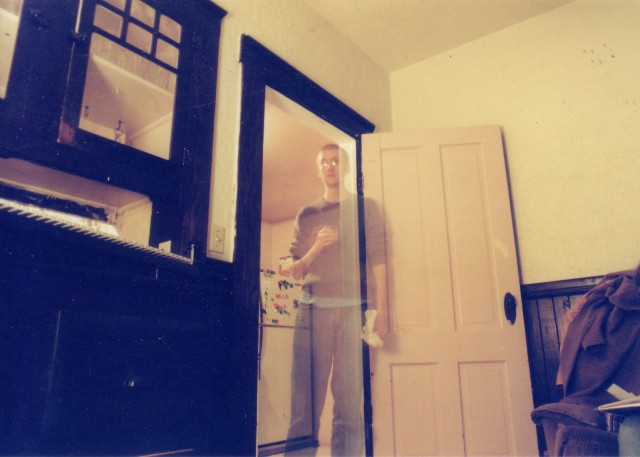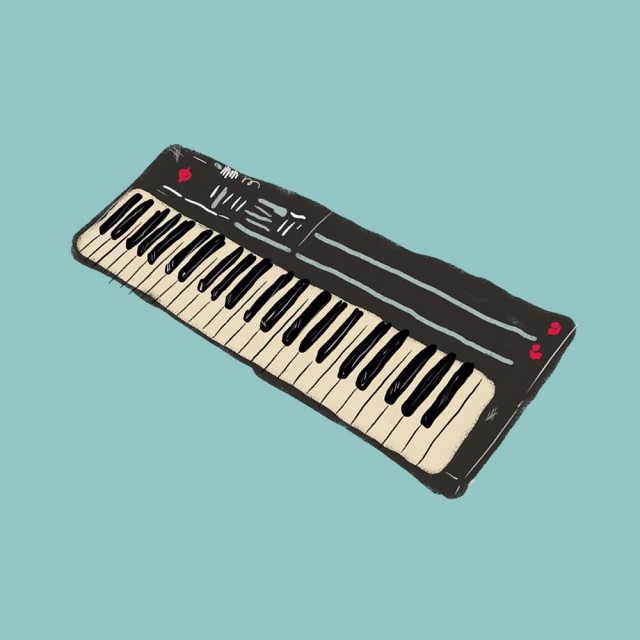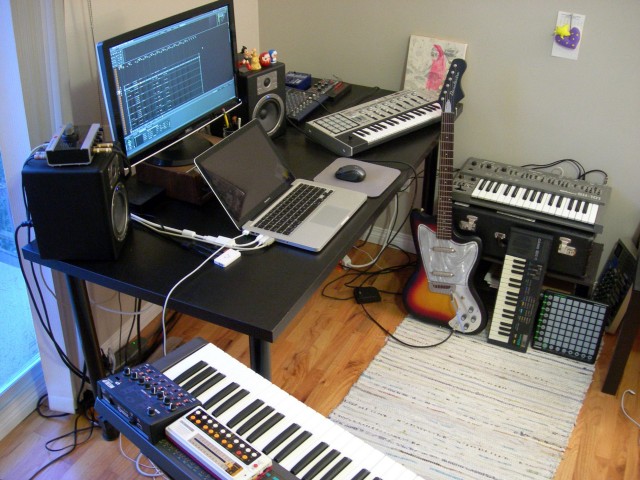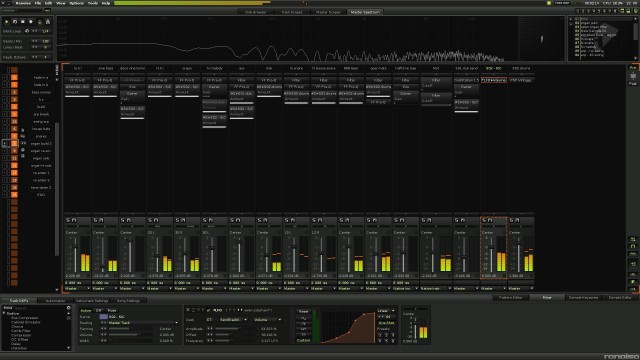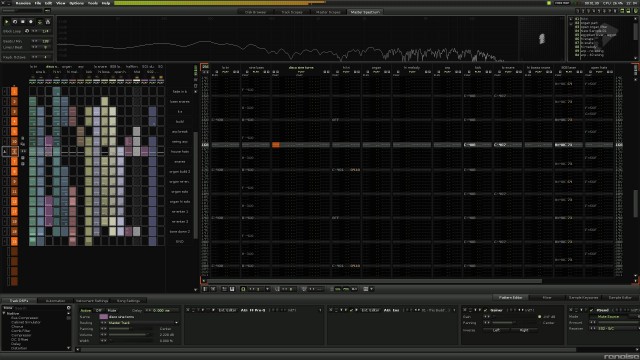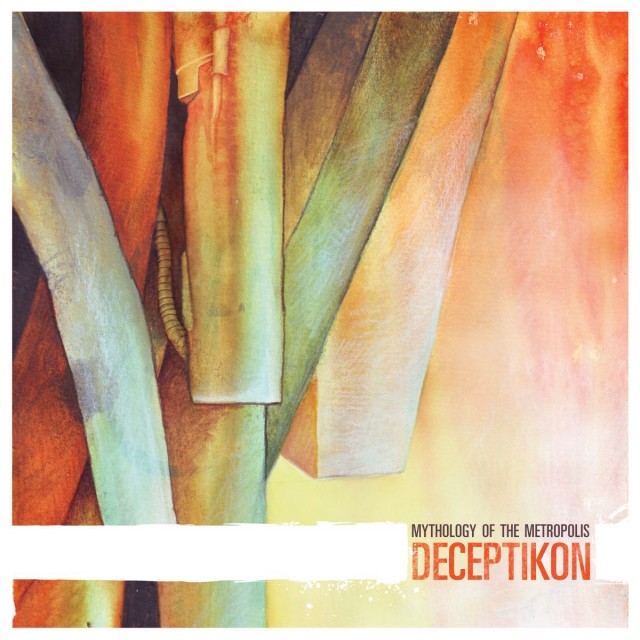Artist Zack Wright, for a handful of followers of what we used to call IDM, will be a blast from the past. Recording as Deceptikon on labels like Merck and Daly City Records, Zack is back. His name is now Dkon, and the story is more than just him: in the absence of a Merck to release adventurous music, Dkon is helping launch a new label entitled Tokyo Ghost Island, with an EP to be followed soon by new records from Jemapur, Secret Palindromes, and an EP from Stockton & Malone, among other things.
Swimming upstream against gear fetishism, the 800 EP is proud to be cheap. The Korg Poly 800 on which the release is focused is a dirt-cheap eBay score, but as Dkon puts it, it’s also “one of the most underrated analog polysynths out there.” I’d be nervous about CDM driving up its value before I can get one – it’s been on my wish list – except that there are a lot of them. It was the first synth for many players.
With that spirit, Dkon sends along a manifesto of sorts about music making. He’s been coupling the Poly 800 with a production workflow entirely centered on Renoise, the modern tracker, for recording and sequencing. But tools aside, there’s a minimal philosophy here I think a lot will like.
Oh, and about the album: it’s raw, unaffected, with the sweet spare sounds of the Korg set to good-natured beats, as clean as your local Poly 800 in a garage sale probably isn’t. It’s not retro; it’s just … well, good. The synthesis is unabashedly front and center, everything perfectly machined in pure economy. Less is more, indeed. Have a listen: the full tracks are on SoundCloud:
Dkon – 800 EP by Dkon / Deceptikon
(I love this sound — but for a radically different side of the artist, be sure to hear some of his past work and remixes below; he’s got quite a range.)
For his part, Dkon is based in San Francisco, by way of Tokyo, Seattle, Washington, Eugene, Oregon, and Portland, Oregon, except I ran into him in Brooklyn at Percussion Lab.
Bonus points if you remember Deceptikon. And if you don’t, you know we’re not music snobs here; I think you’ll be pleasantly surprised to discover him through the new Dkon music. (See bottom for some Deceptikon music, too.)
But let’s see if you agree with Dkon’s philosophy, behind this record and DIY, economy-be-damned, do-it-on-the-cheap, make-it-great spirit. He shares those thoughts with CDM:
DKON’S TIPS FOR CREATIVE SUCCESS
1. Less is more.
If you read nothing else in this article, read this. Having more options is not good for your creativity. Learn what you have, use what you have. Having a limited set of options forces you to focus.2. You don’t need expensive stuff.
There are a lot of people who think you need to keep improving your studio, and getting the latest, most expensive gear in order to have the ability to be able to make something good. This is nonsense. From an economic point of view, the 800 EP cost me about $125 to make. (Renoise license of about ~$75, and I bought the 800 on Craigslist for $40). I made my first several albums (*Lost Subject*, *Greater Cascadia*, and *Mythology of the Metropolis*) with very limited means and equipment. Make do with what you have. Buy gear secondhand, but only what you will actually use. Use free or cheap software. Use free or cheap plugins.3. It doesn’t matter what software you use.
There are so many DAW options now, but they all do basically the same thing. The only real difference is workflow. Pick one that appeals to you, learn it as you go along, and you will succeed. I have been using mostly Renoise for the past few years because I like the workflow and relatively simple interface. It may look confusing if you’ve never used a tracker before, but once you get the hang of it, it’s incredibly fast to get your ideas down, which is a major advantage. When inspiration hits you, the faster you can start working, the better.4. Work around the limitations of what you have.
If something is limited in some way, use it to your advantage. Why do you think things like the 303 and 808 are still universally adored? They are both incredibly limited instruments, but what they do, they do very well. Using a more concrete example in my case, the Poly 800. It’s horribly tedious to program, but has a great sound and a lot of character. If it was covered in knobs and sliders, I don’t think it would be as appealing in a bizarre kind of way. The limited nature of the instrument encourages creativity.5. Treat everything as a sample.
Especially in regards to software like Renoise. Find a sound on an instrument you like. Record yourself playing a few chords or a sequence of notes. Chop it up, sequence it, and rearrange it. Usually, if I do this, the sequence that ends up being used is different than the one that I originally played. Move things around, play with the pitch, change the envelopes. Being imprecise with your editing gives it a more humanized feel, without resorting to adding “humanization” after the fact.6. Fidelity is highly overrated.
Do you think anyone is going to care if your snares are amazingly compressed and EQ’ed if your song is terrible? No. Making your music sound “nice” should be an afterthought. Focus on content, not gloss.7. If you’re not having fun, you’re doing it wrong.
Making music, or art of any kind, should be fun. Treat it as play, not as work. Don’t think of what you want to make before you start – let the finished product reveal itself through your work. Dive in and explore without conscious thought.
http://www.deceptikon.net/
http://soundcloud.com/dkon
http://www.renoise.com/
Inside the Studio: Gear and Renoise Session Screenshots
Click the images for a closer look; all images courtesy the artist and used by permission.
More Music
Mythology of the Metropolis 12″ by Dkon / Deceptikon
Artwork for the Mythology of the Metropolis album is, I think, really beautiful:
The painting is the work of Philadelphia-based Richard Bailey, aka artist proem, who also did my album cover as well as the CSS work on CDM. This isn’t some sort of cabal we’ve put together; I keep running into these lads and the connections between them by pure accident. There’s a sort of diffuse, scattered community of people who are expatriated from a forgotten IDM nation. If IDM dies, CDM lives, at least.
And for good measure, the music video for “Broken Synthesizers,” via reader mikrosopht in comments, who worked on it.
Brilliant idea – hacking YouTube timelines to make an interactive 909 – though I can’t get it to work for me at the moment.
Thanks to Dkon for all these ideas.
Care to debate – or echo – his creative tips? Sound off in comments.
